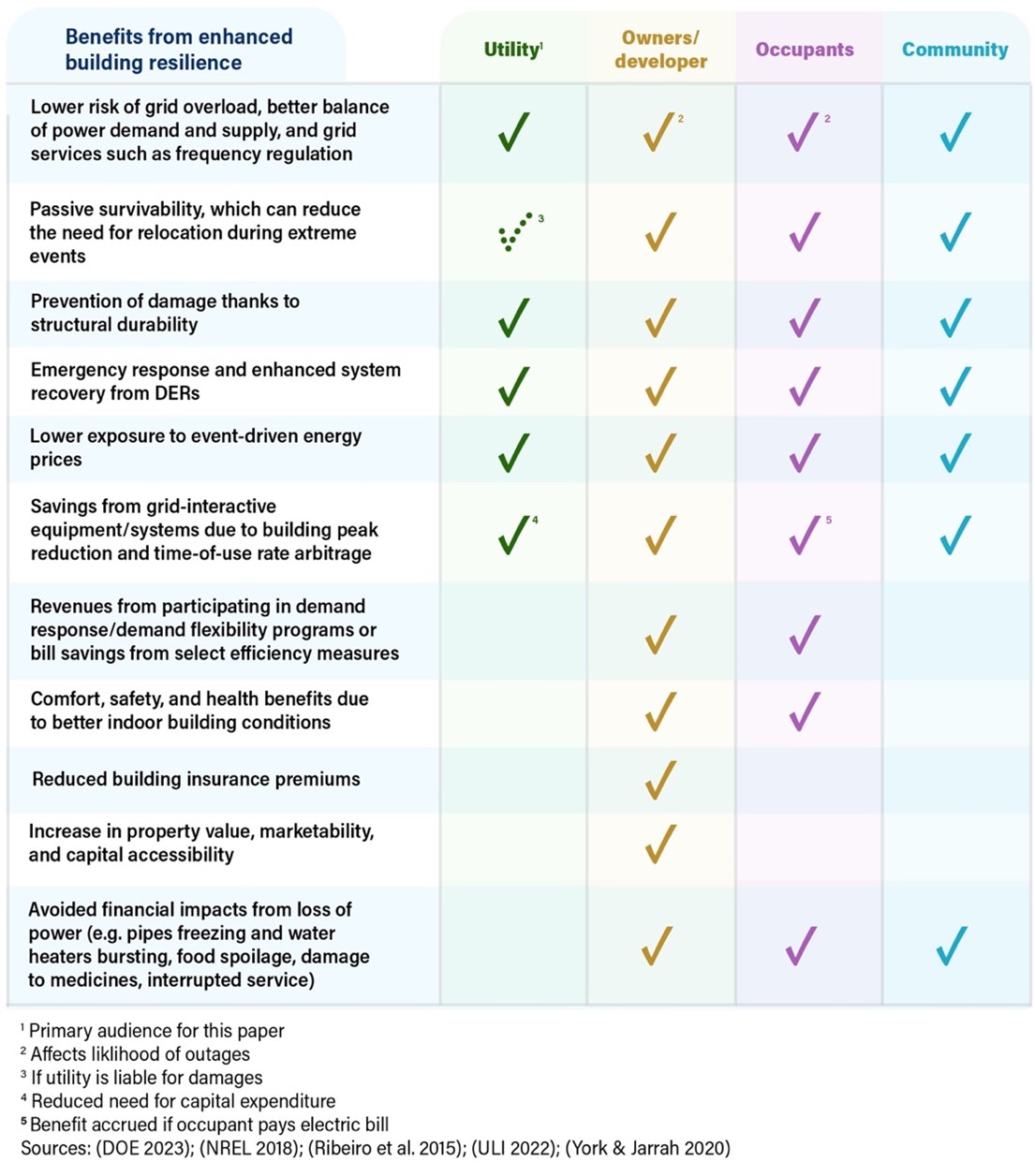Energy retrofits make buildings more resilient in the face of extreme weather. But many efficiency programs do not consider these benefits in determining whether programs are cost effective, resulting in fewer upgrades and continued vulnerability to future climate events.
Building retrofit measures—such as insulation and air sealing, daylighting, and installing efficient windows—don’t just reduce energy costs. They can improve the capacity of a building to retain livable conditions for longer periods during extreme temperatures, hurricanes, and wildfires, making buildings more resilient to disasters.
Improving building energy efficiency enhances resilience—the ability of buildings, the grid, and communities to withstand and rapidly recover from power outages and maintain operations. It can support grid reliability by lowering power demand and balancing the power demand and supply when electric systems are under stress to reduce the risk of grid overload and disruptions. In an outage, improved energy resilience of buildings also supports more orderly restoration of services, giving utilities time to prioritize where to restore first and in the most cost-efficient manner.
A new ACEEE report finds that although there are many resilience benefits from energy efficiency retrofits, these benefits are undervalued or missing from program cost-benefit evaluations and selection processes. That undercounting could even tip the scales to prevent an efficiency program from happening.
The table below outlines the benefits enhanced building energy resilience yields to utilities, building owners, and everyone who lives and does business in a community. Many of these benefits are not assessed in utility cost-effectiveness tests because no established or standardized methods exist to capture their value. The data on these benefits are often not collected for utility efficiency programs, and utility regulators do not require that this information be reported.
Resilience benefits from energy efficiency retrofits accrue to various stakeholders
If resilience benefits are assigned a value, utilities and regulators could consider these benefits in determining the cost-effectiveness of energy efficiency programs and have a more accurate assessment of the benefits. Incorporating resilience benefits in program evaluations can improve program decision-making and promote investment in demand-side measures to enable more energy efficiency improvements.
Varying methods for quantifying resilience benefits
Quantitative methods used for valuing resilience benefits vary in complexity. They can be at the building project or utility program evaluation scale to capture the risk-reduction benefit from increased system reliability and grid resilience. Project-level evaluations include resilience benefits to determine if an investment is financially beneficial, tracking resilience-related metrics in projects such as estimating outage frequency, magnitude, and duration, or employing a risk assessment analysis.
At the program level, resilience value can be estimated using the concept of avoided cost, such as not having to supply backup electricity from a diesel generator during a blackout, or by including resilience as a metric in program evaluations. Apex Analytics uses avoided cost to value building resilience benefits in its study for the Northwest Power and Conservation Council. Its method involves identifying the resilience event and its duration, estimating the energy savings from energy efficiency upgrades, and estimating the marginal costs and avoided costs as determined by savings from a backup power system.
Some states include resilience as an impact in program-level cost-effectiveness assessments using the National Standard Practice Manual for Benefit-Cost Analysis of Distributed Energy Resources (NSPM for DERs). Minnesota’s Department of Commerce, which leads the effort to update the cost-effectiveness methodologies for Minnesota’s investor-owned utilities, uses the guidance in NSPM for DERs and acknowledges resilience as an impact in its new cost test for the 2024–2026 period. Resilience is considered both a participant energy and societal impact within the Minnesota Cost Test. Maryland has similarly used the NSPM for DERs framework and included resilience in its estimate of program cost-effectiveness.
Next steps for utilities, regulators, jurisdictions, and advocates
Despite these early examples, more analyses are needed to demonstrate how to value resilience benefits in utility programs. While the early examples of Minnesota and Maryland have shown increasing recognition and acceptance of valuing resilience, we identify the following actions to further integrate resilience benefits in energy efficiency programs:
- Utilities can develop and formalize approaches to integrate resilience with efficiency approaches.
- Regulators can help standardize methodologies for quantifying resilience to enable more widespread consideration of resilience benefits.
- State and local jurisdictions can incorporate building energy resilience in emergency planning efforts and work with utilities to advance local resilience planning.
- Advocates, building owners, and tenants can prioritize resilience alongside other benefits to advocate for the policies and programs that scale retrofits and increase cities’ and municipalities’ resilience.
Advancing and expanding efforts to value the resilience benefits of energy efficiency can be a critical driver in increasing investments in efficiency measures, improving the communities’ ability to withstand extreme weather and climate events.


